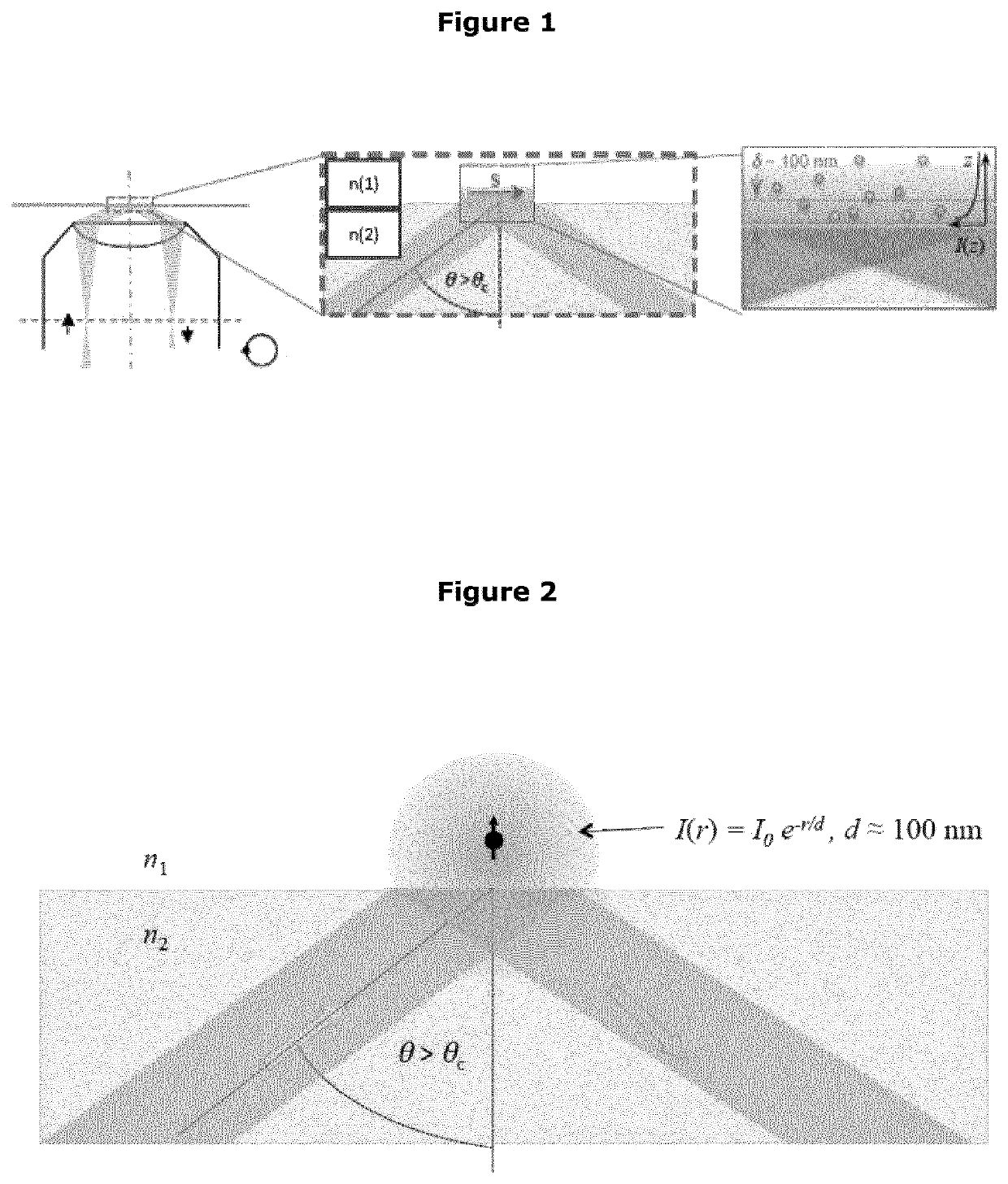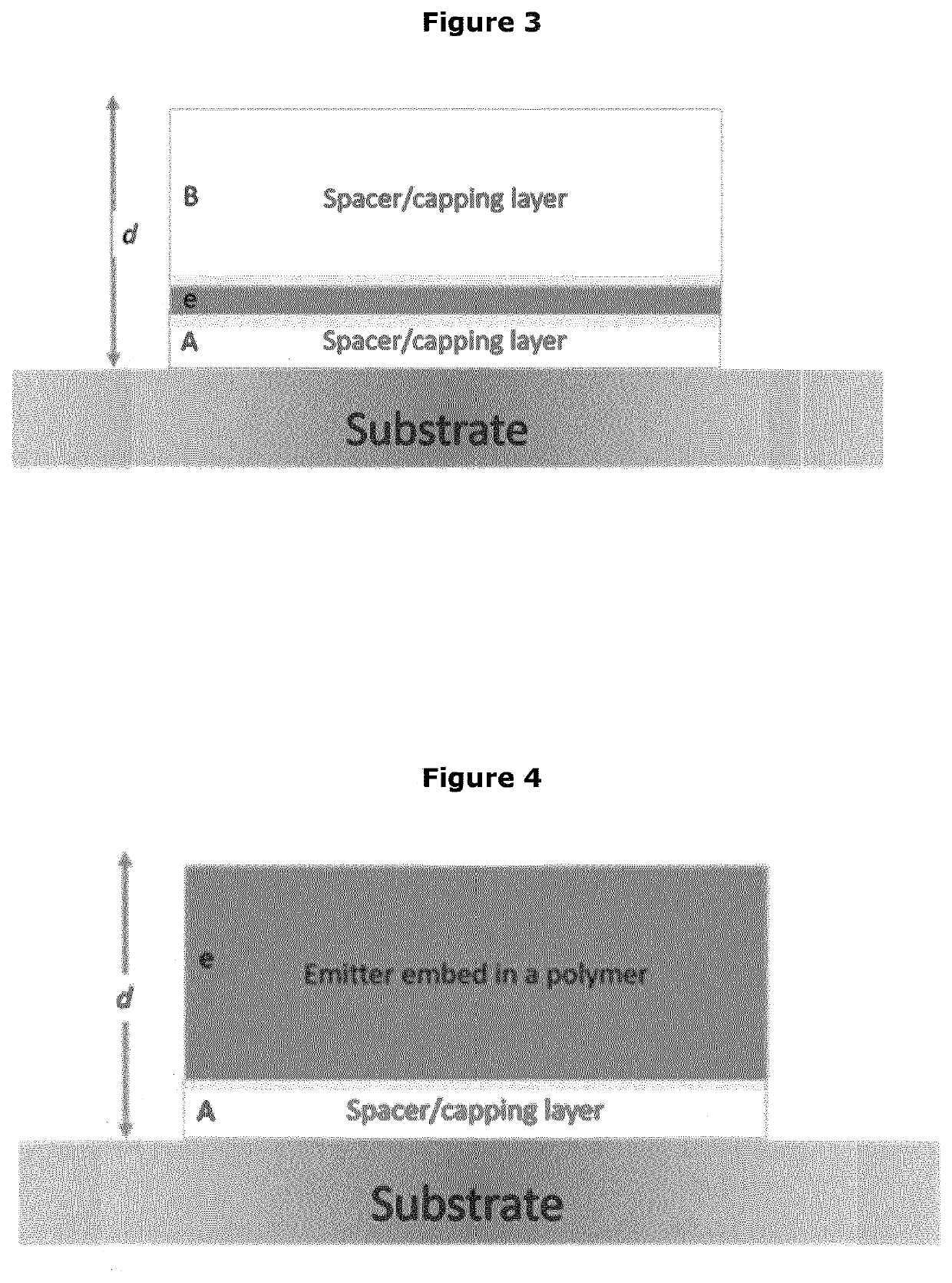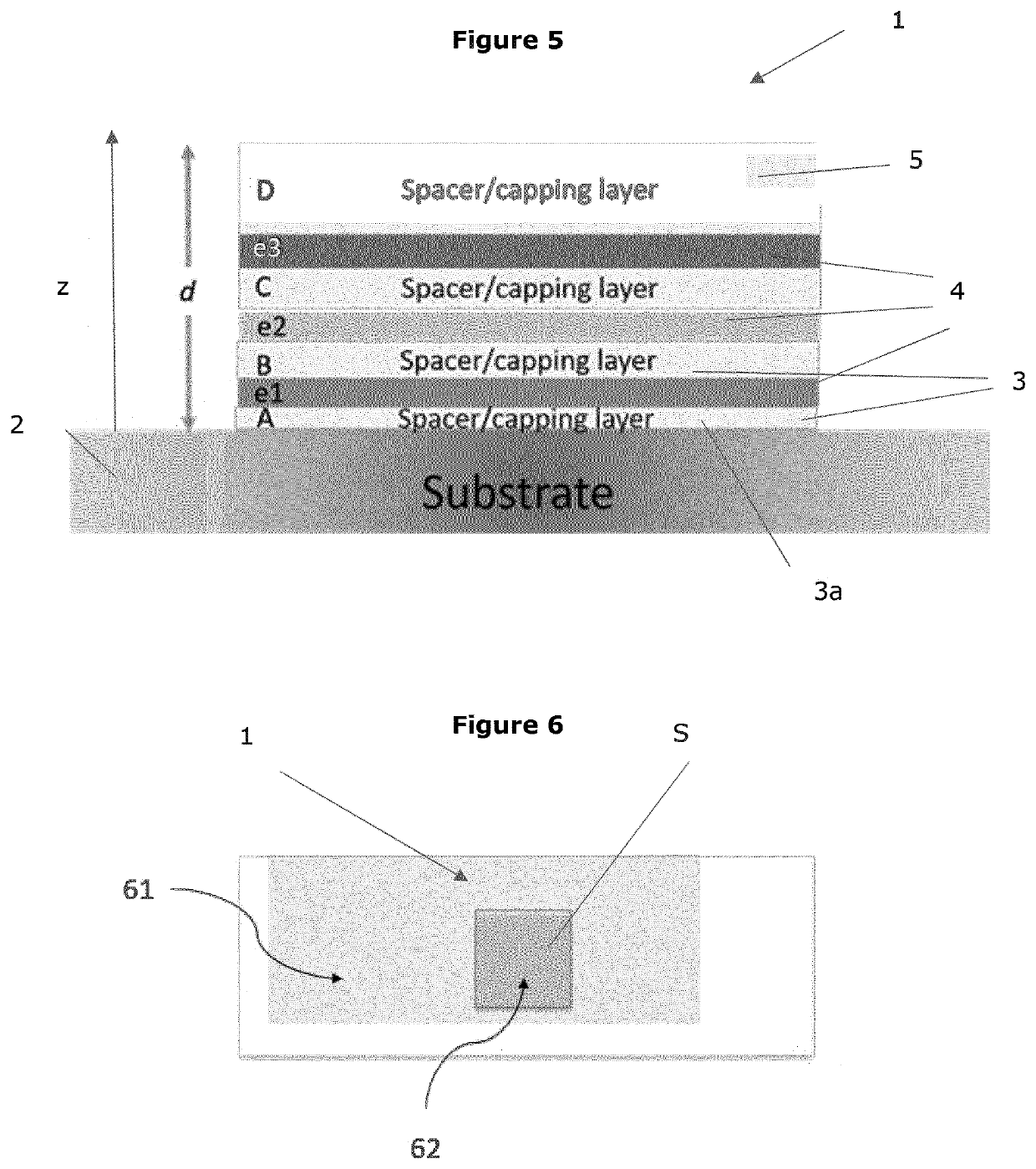Calibration standard for evanescence microscopy
a technology of evanescence microscopy and calibration standard, which is applied in the field of fluorescence microscopy, can solve the problems of large inaccuracy of light confinement statements at the reflecting interface, difficult measurement of exact thickness of this light sheet, and increased fluorescence intensities, so as to achieve high quantum yield, reduce photobleaching, and increase particle size
- Summary
- Abstract
- Description
- Claims
- Application Information
AI Technical Summary
Benefits of technology
Problems solved by technology
Method used
Image
Examples
preparation examples
Calibration Standard Preparation Examples
[0144]The chemicals used in the Examples were purchased from SIGMA-ALDRICH.
[0145]The following substrate has been used:[0146]borosilicate (BK-7) substrate with refractive index, n3=1.514 at 488 nm.
[0147]The following polymers have been used:[0148]Poly(2,2,3,3,3-pentafluoropropyl methacrylate)—(PFA);[0149]Polydiallyldimethylammonium—(PDDA)[0150]Polystyrene sulfonate (PSS)[0151]Poly venyl alcohol (PVA)
[0152]The following fluorescent emitters have been used:[0153]J-aggregate of meso-tetra(4-sulfonatophenyl)porphine (TPPS4);[0154]Tetraphenylporphinetetrasulfonate (TPPS4−, or “Base TPPS”);[0155]CAS No 1461-15-0 (calcein)
[0156]Unless stated otherwise, all the materials were used as received from the manufacturers.
[0157]The calibration samples were characterized by:[0158]Ellipsometry, to measure layer thicknesses
Example 1: Preparation of a Single-Fluorescent Emitter Layer Calibration Sample 1 (Sample 1) According to the Invention
1.1 Material and Met...
example 1
of Typical Measurement with Type-1 Sample (Single Homogenous Dye Layer)
[0224]1. Material and methods
1.1 Control in epifluorescence (EPI)
1.1.1 mount sample on microscope;
1.1.2 chose laser wavelength or white light source with matching excitation filter overlapping with fluorophore excitation spectrum;
1.1.3 chose matching dichroic mirror and emission filter;
1.1.4 focus at interface layer;
1.1.5 take in-focus plane image of the calibration sample (see FIG. 7).
1.2 Variable-angle TIRF image acquisition
1.2.1 switch to evanescent-wave (TIRF) excitation;
1.2.2 refocus (note focus w / respect to EPI);
1.2.3. starting with theta=0° (which should be identical to EPI), take TIRF images at different polar beam angles (the setup must be calibrated so that the angle of the incoming beam with respect to the optical axis is known to 0.5° max);
1.2.4 acquire variable-angle TIRF image series;
1.2.5. repeat step (1.2.4) at 5-10 different locations on the sample;
1.2.6 chose regions of interest (ROIs) on sample...
example 2
rotocol for «Semi-Infinite» Dye Layer
[0228]Simpler than the above 3-D samples, topping a coverslip with a dilute fluorophore solution and thus generating a layer of ‘infinite’ thickness (d>>δ) creates a homogenous sea of fluorescence that can be used in conjunction with VA-TIRF to estimate the effective penetration depth from the variation of the cumulative fluorescence. Assuming a mono-exponentially decaying EW with a decay length δ(θ) and a long-range component with D>>δ the superposition of two exponentials,
F(z)=A·e−z / δ(θ)+B·e−z / D (Eq. 1)
describes the axial intensity decay. Here, we assumed that D is only slowly varying with θ, if at all. After integration over z in the bounds [0, ∞], eq.3 yields a linear dependence of the measured fluorescence on δ(θ),
Ftot=A×δ(θ)·(1-e-zδ(θ))+B·D·(1-e-zD)≈A·δ(θ)+B,(Eq.2)
[0229]because the second term is an angle-independent offset. If eq.4 is normalized for the θ-dependence of the incident intensity at the interface, I0(z=0), e.g., by recordi...
PUM
 Login to View More
Login to View More Abstract
Description
Claims
Application Information
 Login to View More
Login to View More - R&D
- Intellectual Property
- Life Sciences
- Materials
- Tech Scout
- Unparalleled Data Quality
- Higher Quality Content
- 60% Fewer Hallucinations
Browse by: Latest US Patents, China's latest patents, Technical Efficacy Thesaurus, Application Domain, Technology Topic, Popular Technical Reports.
© 2025 PatSnap. All rights reserved.Legal|Privacy policy|Modern Slavery Act Transparency Statement|Sitemap|About US| Contact US: help@patsnap.com



